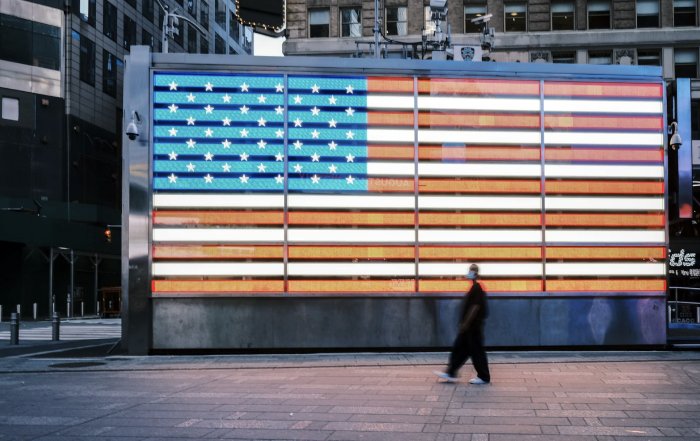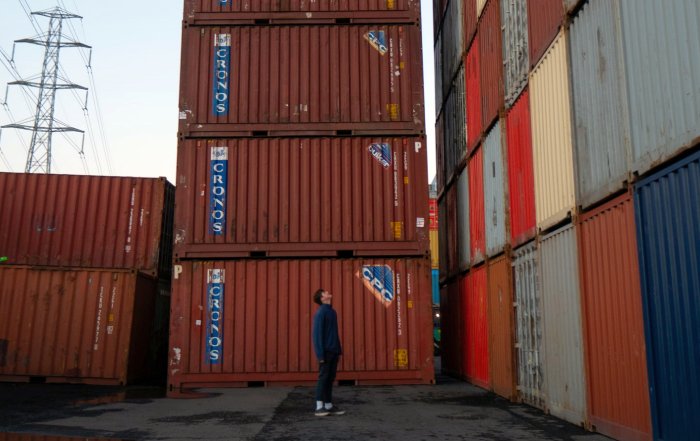Technology Innovations Reshaping American Workplaces in 2026
A New Phase of Digital Transformation in the United States
By 2026, the digital transformation of American workplaces has entered a more mature and consequential phase, moving decisively beyond pilot projects and innovation showcases into the core of how organizations in the United States operate, compete, and grow. What began as reactive digitization during the pandemic years has evolved into a deliberate re-architecture of business models, operating structures, and talent strategies, with technology woven into almost every decision that executives make about investment, risk, and long-term positioning. For readers of usa-update.com, this transformation is not merely a narrative about the technology sector; it is a daily reality that influences hiring plans, capital allocation, compliance obligations, and workplace culture from major metropolitan centers like New York, Los Angeles, and Dallas to fast-growing hubs such as Austin, Raleigh, and Denver, as well as smaller communities seeking to plug into national and global innovation ecosystems.
The current wave of change is powered by a convergence of technologies and structural forces that have matured significantly since early 2020s: increasingly capable artificial intelligence systems, including multimodal generative models; widespread adoption of cloud, edge, and distributed computing; the normalization of hybrid and remote work arrangements; accelerating deployment of automation and robotics; and an intensified focus on data governance, cybersecurity, and regulatory compliance. At the same time, persistent economic uncertainty, shifting monetary policy, geopolitical tensions, and a fragmented global trading environment are pushing American organizations to seek productivity gains, resilience, and agility through technology. Workers, for their part, are demanding that digital tools be deployed in ways that support autonomy, well-being, and long-term employability, rather than simply extracting more output from fewer people. These intersecting pressures mean that technology strategy can no longer be separated from broader questions of economic competitiveness, social equity, national security, and community well-being, themes that underpin much of the economic and business coverage on usa-update.com.
Against this backdrop, American workplaces in 2026 are becoming test beds for new forms of collaboration between humans and machines, new governance models that balance innovation with accountability, and new approaches to skills development and talent mobility. The organizations that are emerging as leaders are those that combine technical sophistication with deep expertise in risk management, regulatory navigation, and human-centered design, demonstrating that sustainable digital transformation is as much about culture and capabilities as it is about software and hardware. This emphasis on experience, expertise, authoritativeness, and trustworthiness is increasingly central to how executives, policymakers, and workers evaluate both technology vendors and information sources, and it shapes the editorial mission of usa-update.com as it tracks developments across news, technology, business, and related domains.
Artificial Intelligence as a Strategic Business Partner
By 2026, artificial intelligence has firmly established itself as a strategic business partner in the United States, moving from experimental deployments to deeply integrated roles in decision-making, operations, and customer engagement. Generative AI systems now handle complex language, image, audio, and code tasks in ways that would have seemed speculative only a few years earlier, while more traditional machine learning models continue to drive gains in forecasting, optimization, and anomaly detection. For American enterprises, the conversation has shifted from whether to use AI to how to embed it responsibly and profitably into every function, from finance and marketing to supply chain, human resources, and risk management.
Major financial institutions such as JPMorgan Chase, Bank of America, and Citigroup have expanded their use of AI-driven analytics for credit risk assessment, fraud detection, and algorithmic trading, integrating these systems into broader digital platforms that support real-time decision-making. Learn more about how data and automation are reshaping capital markets and consumer finance through resources from the Board of Governors of the Federal Reserve System, which regularly analyzes the implications of financial innovation for stability and inclusion. In parallel, insurers and asset managers are deploying AI to model climate risk, optimize portfolios, and personalize client interactions, reinforcing the centrality of data and algorithms in the financial architecture that underpins the U.S. economy.
Healthcare organizations have also deepened their reliance on AI, using predictive models to identify patients at risk of complications, support diagnostic imaging, and streamline administrative processes such as billing and claims adjudication. Institutions like the Mayo Clinic and Cleveland Clinic continue to publish research on AI-assisted clinical workflows, while regulators at the U.S. Food and Drug Administration (FDA) refine frameworks for evaluating and approving software as a medical device. Those seeking to understand how AI is changing clinical practice and health system performance can explore guidance and policy updates from the FDA, which now regularly addresses algorithmic tools and machine learning-based medical products.
The strategic integration of AI has elevated new governance challenges for boards and senior executives, who must now oversee not only financial and operational risks, but also algorithmic bias, model robustness, data provenance, and explainability. The National Institute of Standards and Technology (NIST) has become a key reference point, with its AI Risk Management Framework and related guidance offering a structured approach to trustworthy AI deployment. Learn more about emerging standards and best practices through NIST's AI resources, which are widely consulted by American firms that wish to demonstrate accountability to regulators, investors, and the public. For readers of usa-update.com, coverage of these developments underscores that AI in the workplace is no longer a purely technical matter; it is a board-level issue that touches on ethics, regulation, and corporate reputation.
Automation, Robotics, and the Reconfiguration of Work
Physical automation and robotics are undergoing a parallel evolution, reshaping the geography and organization of work across American manufacturing, logistics, agriculture, and certain service sectors. Industrial robots, collaborative robots (cobots), and autonomous mobile robots have become more affordable, flexible, and interoperable, enabling deployment not only in large automotive plants and mega-warehouses, but also in small and medium-sized enterprises that historically lacked the capital or technical capacity to automate. This diffusion of robotics is altering the cost structure of production and distribution, supporting reshoring and nearshoring strategies that reduce dependence on extended global supply chains and respond to concerns about geopolitical risk and supply disruption.
In manufacturing regions across the Midwest, South, and parts of the West, companies are deploying advanced robotics alongside additive manufacturing, digital twins, and industrial IoT sensors to create highly instrumented, data-rich production environments. Organizations such as the World Economic Forum and MIT have documented how these technologies are changing the skills mix required on the factory floor, with rising demand for technicians who can program, maintain, and troubleshoot automated systems, as well as engineers who can interpret data and redesign workflows. Those interested in the broader economic and labor implications of automation can explore analyses from the Brookings Institution, which has produced influential research on how robotics and AI affect regional inequality, job quality, and social mobility.
American logistics giants including Amazon, UPS, and FedEx continue to expand their use of automated sorting systems, robotic picking solutions, and AI-driven route optimization, enabling faster and more predictable delivery even as e-commerce volumes remain high. However, these advances have also intensified debates about working conditions, surveillance, and ergonomics in highly automated warehouses and delivery networks. The Occupational Safety and Health Administration (OSHA), in collaboration with academic institutions such as Carnegie Mellon University, is studying human-robot interaction and developing guidance on safe deployment of automation in mixed human-machine environments. Learn more about evolving workplace safety standards and research through OSHA, which increasingly addresses digital and robotic risks alongside traditional occupational hazards.
For employers and policymakers, the dual nature of automation-its potential to increase productivity and create new roles, and its risk of displacing workers or polarizing labor markets-underscores the need for proactive workforce strategies. Coverage of employment and labor market trends on usa-update.com regularly highlights initiatives that seek to align technology investments with training and mobility pathways, ensuring that workers in both urban and rural communities can transition into emerging occupations rather than being left behind by technological change.
Hybrid Work, Collaboration Platforms, and the Evolving Office
By 2026, hybrid work has solidified into a default operating model for a large share of knowledge-intensive organizations in the United States, though the exact mix of remote and in-office days varies widely by sector, company, and role. What unites leading employers is the recognition that hybrid work is not a temporary concession but a structural shift that requires intentional design of workflows, collaboration norms, and physical spaces. Software platforms from Microsoft, Google, Zoom, and Slack Technologies have evolved into comprehensive digital work environments that integrate video conferencing, persistent messaging, shared documents, project management, and AI-powered assistants, enabling employees to coordinate across time zones and geographies with increasing fluidity.
Yet the technology layer is only part of the story. Research from institutions such as Stanford University and thought leadership in the Harvard Business Review have shown that successful hybrid organizations invest heavily in leadership development, explicit communication norms, and performance management systems that emphasize outcomes rather than physical presence. Learn more about evidence-based practices for flexible work design through resources from Stanford's digital work research, which examine productivity, innovation, and well-being in distributed teams. For readers following U.S. business strategy and management on usa-update.com, case studies of companies that have thoughtfully reimagined their operating models provide practical insight into what it takes to make hybrid work sustainable.
The physical office itself is being reconfigured to support collaboration, creativity, and social connection rather than routine individual tasks that can be performed from home or elsewhere. Many organizations are reducing their overall footprint while investing in more flexible, technology-rich spaces that can host workshops, client events, and cross-functional team sessions. Urban centers such as New York, San Francisco, Chicago, and Washington, D.C. are experimenting with new mixes of office, residential, retail, and cultural uses as demand for traditional five-day-a-week office space declines. The Urban Land Institute and the National Association of Realtors track these shifts in commercial real estate, offering data and analysis on how hybrid work is reshaping downtown economies and regional development patterns. Those interested in how travel, hospitality, and workplace design intersect can explore business and leisure travel coverage on usa-update.com, which highlights how professionals navigate increasingly flexible work and mobility options.
Data, Cloud, and Cybersecurity as Foundational Capabilities
As American workplaces become more digitized and interconnected, data has emerged not only as a valuable asset but as a core organizing principle for how organizations are structured and governed. Cloud computing, once considered a tactical infrastructure choice, has become a strategic foundation that enables scalability, interoperability, and access to advanced services such as AI, analytics, and edge processing. Providers including Amazon Web Services, Microsoft Azure, and Google Cloud now offer industry-specific platforms that bundle data models, compliance features, and sector-tailored tools, allowing financial institutions, healthcare providers, manufacturers, and retailers to accelerate their digital transformations while meeting regulatory expectations.
However, this rapid expansion of digital infrastructure has also increased exposure to cyber threats that are more frequent, more sophisticated, and more consequential than in previous decades. The Cybersecurity and Infrastructure Security Agency (CISA) continues to warn that ransomware campaigns, supply chain compromises, and state-linked intrusions pose systemic risks to critical infrastructure, government networks, and private enterprises of all sizes. Learn more about current threat landscapes, best practices, and joint advisories through CISA, which has become a central hub for public-private cooperation on cybersecurity in the United States. For boards and executives, cyber risk is now treated as an enterprise-wide concern that demands investment in zero-trust architectures, multi-factor authentication, continuous monitoring, and incident response capabilities.
Regulatory expectations have risen accordingly. The U.S. Securities and Exchange Commission (SEC) has implemented rules requiring timely disclosure of material cyber incidents and more detailed reporting on cyber risk governance, while states such as California, Virginia, Colorado, and others enforce comprehensive data privacy laws modeled in part on international frameworks like the European Union's General Data Protection Regulation (GDPR). The Federal Trade Commission (FTC) continues to bring enforcement actions related to data security and privacy misrepresentations, signaling that consumer protection in the digital realm remains a priority. For readers of usa-update.com, coverage of regulation and policy emphasizes that technology innovation in the workplace must be accompanied by robust controls, transparent communication, and a clear understanding of legal obligations across jurisdictions.
Skills, Talent, and the Future of Employment
The transformation of American workplaces by technology is ultimately a human story about skills, opportunity, and the evolving social contract between employers and employees. Automation and AI are changing the mix of tasks within jobs, but they are also creating entirely new categories of work in fields such as data engineering, cybersecurity, human-centered design, AI governance, and advanced manufacturing. International organizations like the World Bank and the Organisation for Economic Co-operation and Development (OECD) have repeatedly emphasized that economies which invest in lifelong learning, digital literacy, and inclusive training pathways are better positioned to translate technological progress into broad-based prosperity. Learn more about comparative insights on skills and productivity from the OECD, which provides benchmarking data that U.S. policymakers and business leaders increasingly consult.
Within the United States, employers are moving away from rigid credential requirements and towards skills-based hiring, recognizing that traditional degree-centric models can exclude capable candidates and slow adaptation to changing needs. Major companies in technology, finance, manufacturing, and retail are partnering with community colleges, bootcamps, and non-profit training providers to develop targeted programs in cybersecurity, cloud administration, robotics maintenance, and data analytics. Platforms such as LinkedIn, Coursera, and edX facilitate online learning and skills verification, while internal talent marketplaces within large corporations match employees to projects based on demonstrated capabilities rather than formal job titles alone. For job seekers and workers looking to reposition themselves, jobs and career coverage on usa-update.com highlights practical pathways into in-demand roles and explains how technology is changing hiring practices across regions and sectors.
Government agencies and educational institutions are also recalibrating their strategies. The U.S. Department of Labor supports apprenticeship models in high-tech fields and funds regional workforce boards that coordinate training efforts with employer demand. The National Science Foundation (NSF) invests in STEM education and research centers that connect universities, community colleges, and industry partners. Learn more about evolving workforce policy and federal initiatives through the U.S. Department of Labor, which publishes guidance and data on labor market trends, training programs, and worker protections. Despite these efforts, significant challenges remain, including barriers to reskilling for mid-career workers, uneven access to high-speed broadband in rural and underserved areas, and persistent inequalities in educational quality and digital readiness. These gaps are a recurring theme in usa-update.com's reporting on employment and labor issues, reflecting the site's commitment to examining who benefits from technological change and who risks being left behind.
Sector-Specific Transformations Across the U.S. Economy
While the overarching patterns of digital transformation are visible across the U.S. economy, the way technology reshapes day-to-day work differs markedly by sector, reflecting distinct business models, regulatory regimes, and competitive dynamics. In entertainment and media, for example, streaming platforms, advanced production tools, and AI-assisted content creation are reshaping how stories are conceived, produced, and monetized. Companies such as Netflix, Disney, and Warner Bros. Discovery rely on sophisticated recommendation algorithms and audience analytics to guide commissioning decisions, marketing strategies, and user experience design, while independent creators use platforms like YouTube and TikTok to reach global audiences with relatively low barriers to entry. Those interested in how these shifts affect culture, intellectual property, and revenue models can explore entertainment and media coverage on usa-update.com, which situates technological developments within broader social and economic contexts.
In the energy sector, digitalization is critical to managing the complexity of an evolving grid that must integrate growing shares of renewable generation, distributed storage, electric vehicles, and flexible demand. Utilities and grid operators are deploying advanced metering infrastructure, AI-based forecasting, and real-time monitoring systems to balance reliability, affordability, and sustainability. The U.S. Department of Energy (DOE) and the International Energy Agency (IEA) have highlighted the role of digital technologies in enabling decarbonization pathways and enhancing resilience against extreme weather and cyber threats. Learn more about grid modernization and sustainable energy strategies through the U.S. Department of Energy, which provides detailed analysis relevant to investors, policymakers, and community leaders. For usa-update.com readers, these developments intersect with coverage of energy markets and policy, as well as broader discussions about industrial strategy and regional economic competitiveness.
Healthcare continues to be transformed by telemedicine, remote monitoring, electronic health records, and AI-driven diagnostics, supported by improved connectivity and cloud infrastructure. Hospitals and health systems are leveraging digital tools to coordinate care across settings, manage chronic diseases, and engage patients in preventive behaviors, while also facing complex challenges related to interoperability, data security, and reimbursement. The Centers for Medicare & Medicaid Services (CMS) has expanded telehealth reimbursement and is experimenting with value-based care models that reward outcomes rather than volume, while the National Institutes of Health (NIH) supports research into digital therapeutics and data-driven population health. Learn more about federal perspectives on digital health through CMS, which publishes policies and reports that directly influence how technology is integrated into care delivery.
Retail and consumer-facing industries illustrate another dimension of transformation, as e-commerce, mobile payments, and AI-powered personalization have become embedded in everyday purchasing experiences. Major retailers such as Walmart, Target, and Costco are refining omnichannel strategies that blend online ordering, curbside pickup, and in-store experiences, supported by data analytics that optimize inventory, pricing, and marketing. Technologies such as computer vision, RFID, and automated checkout are changing store layouts and staffing patterns, while social commerce and influencer marketing reshape brand-consumer relationships. At the same time, concerns about data privacy, algorithmic transparency, and digital inclusion are prompting scrutiny from regulators and consumer advocates. Coverage of consumer trends and retail innovation on usa-update.com helps readers understand how these technologies influence not only convenience and choice, but also competition, trust, and consumer rights.
Global Context and International Competitiveness
The transformation of American workplaces is deeply intertwined with global trends, as technology innovation, capital flows, and talent mobility span borders and create both opportunities and competitive pressures for U.S. firms. Advanced economies such as Germany, Japan, South Korea, Singapore, and the Nordic countries are implementing ambitious digitalization strategies, often supported by coordinated industrial policies and robust social safety nets. The European Union's regulatory initiatives, including the AI Act and the GDPR, exert extraterritorial influence by shaping how multinational companies design and deploy digital services worldwide. Learn more about the EU's evolving digital regulatory framework through the European Commission, which publishes legislative texts and impact assessments that American executives now routinely monitor.
In Asia, economies such as China, India, and Singapore continue to expand investments in 5G, smart manufacturing, AI research, and digital public infrastructure. Organizations like the Asian Development Bank (ADB) and the World Economic Forum (WEF) analyze how these investments are reshaping supply chains, innovation ecosystems, and labor markets across the region. For American business leaders, understanding these developments is essential for making informed decisions about sourcing, market entry, partnership, and technology standards. Readers can explore international business and policy coverage on usa-update.com to see how U.S. workplace transformations fit into a broader global competition for technological leadership and talent.
Close partners such as Canada, the United Kingdom, and Australia provide additional reference points, as they experiment with digital skills strategies, AI governance frameworks, and infrastructure investments that often resemble, but do not exactly mirror, U.S. approaches. The Council on Foreign Relations (CFR) and the Brookings Institution offer in-depth analysis on how the United States can maintain its technological edge while managing interdependence with allies and rivals. Learn more about strategic policy debates and international implications through resources from the Council on Foreign Relations, which provide a global perspective on issues that directly affect American workplaces, from supply chain resilience to digital trade rules.
Regulation, Ethics, and Trust in a Digitally Mediated Workplace
As technology becomes deeply embedded in everyday work, questions of ethics, governance, and trust have moved from the margins to the center of corporate and public discourse. Algorithmic decision-making in hiring, promotion, credit, and insurance has raised concerns about bias and discrimination, while pervasive data collection and monitoring tools have sparked debates about privacy, autonomy, and psychological safety. Organizations such as the Electronic Frontier Foundation (EFF) and Privacy International continue to highlight risks associated with opaque algorithms, intrusive surveillance, and commercialization of personal data, advocating for stronger safeguards and more transparent practices. Learn more about civil society perspectives on digital rights through the EFF, which regularly analyzes technologies that affect workers and consumers.
In the workplace, the deployment of productivity tracking software, biometric access systems, and AI-driven performance evaluation tools is being scrutinized by regulators, labor organizations, and courts. The National Labor Relations Board (NLRB) has begun to address how digital surveillance and algorithmic management intersect with workers' rights to organize and engage in concerted activity, while the Equal Employment Opportunity Commission (EEOC) has issued guidance on the use of AI in employment decisions to ensure compliance with anti-discrimination laws. These developments are closely followed in usa-update.com's regulation and workplace rights coverage, which helps employers and employees alike understand how legal interpretations are evolving in response to new technologies.
Trust is also shaped by how organizations communicate about their technology choices and their implications for jobs, data, and career paths. Companies that are perceived as using technology primarily to cut costs or monitor workers may face resistance, reputational damage, and talent attrition, particularly among younger professionals who place high value on transparency, inclusion, and ethical leadership. Conversely, organizations that engage employees in technology decisions, conduct impact assessments, and invest in reskilling and job redesign are more likely to maintain legitimacy and loyalty. This alignment between technology strategy and organizational values is a recurring theme in usa-update.com's business and leadership reporting, reflecting the site's focus on experience, expertise, and trustworthiness in covering the future of work.
Lifestyle, Well-Being, and the Human Side of Digital Work
The integration of technology into work is reshaping American lifestyles, work-life boundaries, and conceptions of well-being in ways that are both liberating and challenging. Hybrid and remote work have enabled many professionals to relocate from high-cost coastal cities to more affordable regions in the Midwest, South, and Mountain West, contributing to new patterns of internal migration and regional development. However, the same tools that allow work from anywhere also make it easier for work to extend into evenings, weekends, and vacations, blurring the line between professional and personal time.
Health organizations such as the World Health Organization (WHO) and the American Psychological Association (APA) have warned about the mental health impacts of chronic stress, digital overload, and social isolation, especially when combined with economic uncertainty and rapid workplace change. Learn more about the health implications of modern work patterns through the WHO, which provides evidence-based guidance on managing stress, promoting resilience, and designing healthier work environments. Employers are responding with initiatives such as meeting-free days, flexible scheduling, expanded mental health benefits, and digital wellness platforms that offer mindfulness training, counseling, and personalized well-being programs. Yet there is ongoing debate about whether these measures address root causes, such as unrealistic workloads, inadequate staffing, or performance metrics that reward constant availability.
For readers of usa-update.com, these issues intersect with lifestyle and culture coverage, which explores how Americans are renegotiating their relationships with work, technology, community, and leisure. The human side of digital work-questions about meaning, identity, social connection, and balance-has become as important to understanding workplace transformation as technical capabilities or regulatory frameworks. In this sense, the future of work is also the future of everyday life, and the choices that organizations and individuals make about technology adoption will reverberate through families, neighborhoods, and civic institutions across the country.
Strategic Implications for American Businesses and Policymakers
For American executives, policymakers, and workers, the technology-driven transformation of workplaces in 2026 presents a complex landscape that demands strategic, coordinated responses. At the enterprise level, organizations must develop integrated roadmaps that align AI, automation, cloud, and cybersecurity investments with clear business objectives and risk appetites, while also addressing talent development, culture, and governance. This means moving beyond scattered pilot projects and vendor-driven initiatives toward coherent architectures and operating models that can scale and adapt. It also requires building partnerships with technology providers, universities, community colleges, and industry consortia to access specialized expertise and share best practices across sectors.
At the policy level, federal, state, and local governments face the challenge of updating legal frameworks and social protections for a world in which work is more digital, more flexible, and more interdependent than ever before. This includes modernizing labor laws to reflect hybrid and platform-based work, strengthening unemployment insurance and retraining support to facilitate transitions between jobs and careers, investing in high-speed broadband and digital public infrastructure, and coordinating with international partners on standards for AI, data governance, and cybersecurity. Institutions such as the Council on Foreign Relations and the Brookings Institution contribute to these debates by providing rigorous analysis of how technology intersects with economic competitiveness, national security, and social cohesion. Those seeking a broader geopolitical context for workplace transformation can consult resources from the Council on Foreign Relations, which examine how domestic technology policy connects to global power dynamics.
For individual workers and job seekers, the strategic imperative is to embrace lifelong learning, cultivate digital fluency, and build adaptable skill sets that can transfer across roles, industries, and even countries. This does not imply that everyone must become a software developer, but it does mean that comfort with data, collaboration tools, and basic automation will increasingly be prerequisites for advancement in many fields. Platforms and resources highlighted in usa-update.com's jobs and employment coverage offer practical guidance on reskilling, career transitions, and emerging opportunities, helping readers navigate a labor market in which traditional career ladders are giving way to more fluid, project-based, and portfolio-style trajectories.
The Role of usa-update.com in Navigating Workplace Transformation
As technology innovations continue to reshape American workplaces, the need for clear, reliable, and context-rich information has never been more pressing. usa-update.com positions itself as a trusted guide through this complexity, curating news, analysis, and commentary across interconnected domains such as economy, news, events, technology, business, international affairs, travel, employment, lifestyle, regulation, energy, and consumer trends. By connecting these threads, the platform helps readers see how decisions made in corporate boardrooms, legislative chambers, research labs, and individual workplaces combine to shape the future of work and life in the United States and around the world.
In 2026 and beyond, the organizations and individuals that thrive will be those who treat technology not as an isolated domain, but as a pervasive force that must be integrated thoughtfully into strategy, structure, and culture. The transformation of American workplaces is ultimately a story about how society chooses to harness its ingenuity and resources to create value, opportunity, and meaning in a rapidly changing environment. Through ongoing coverage grounded in experience, expertise, authoritativeness, and trustworthiness, usa-update.com aims to support its readers in understanding this story, participating in it, and shaping it in ways that reflect their aspirations for a more innovative, equitable, and resilient future.










